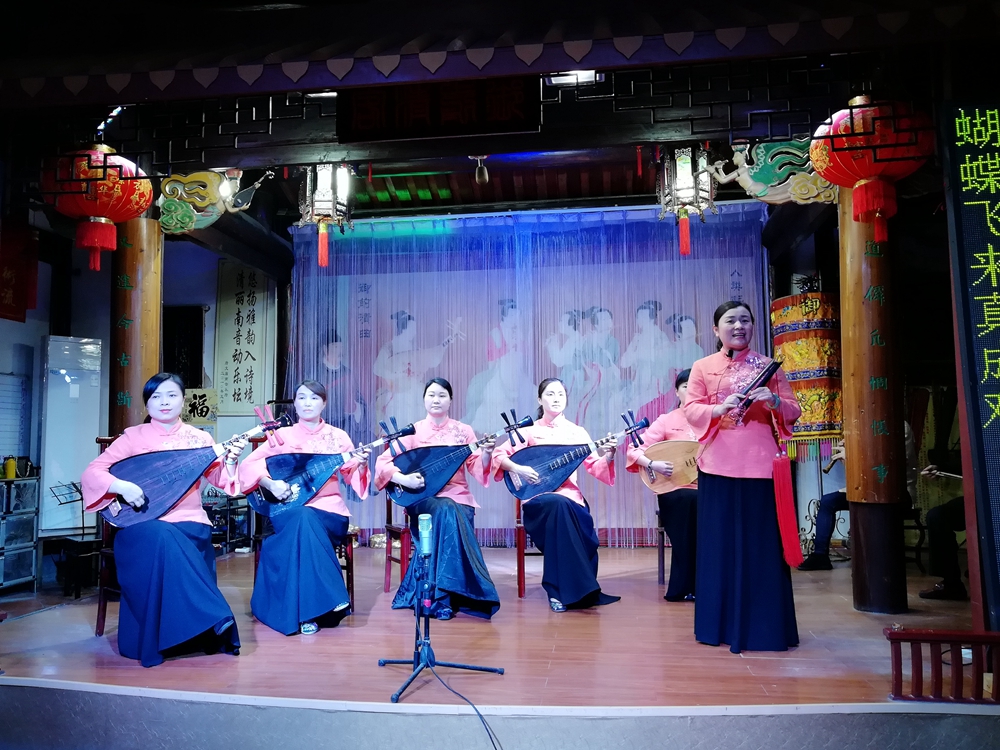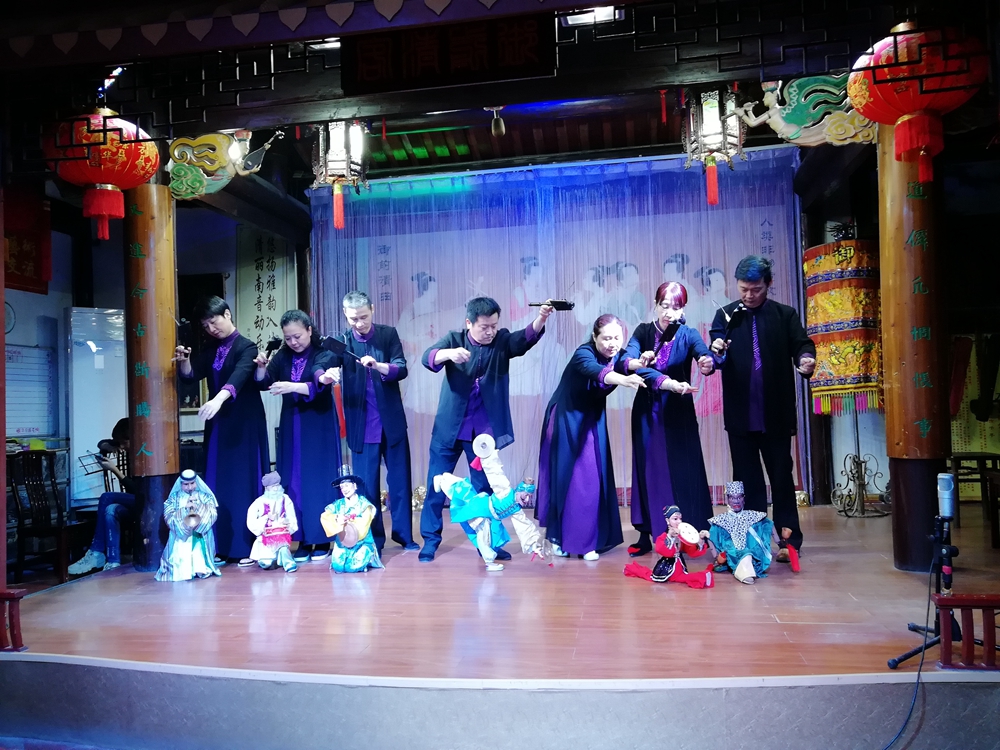Nanyin Performance Hall in Confucius Temple and School
2021-07-19 14:49:50



Nanyin, originally known as “stringed pipe music”, is one of the oldest surviving musical genres in China. It was brought to Quanzhou by migrants from the Central Plains during the Jin and Tang dynasties; it later spread from Quanzhou to other parts of southern Fujian, Taiwan, and the overseas Chinese communities in Southeast Asia.
Nanyin consists of a finger set, a large score and a “silky tune”. It is performed in the form of a pipa and a three-string instrument on the right, and a lute and a two-string instrument on the left, with the clapper player in the middle singing in Quanzhou dialect. Nanyin is dubbed “a gem of Chinese classical music” and “a living fossil of Chinese music history”. On May 20, 2006, Nanyin was inscribed on the State-level Intangible Cultural Heritage List, and on September 30, 2009, it was inscribed on the UNESCO Representative List of the Intangible Cultural Heritage of Humanity.
Founded in 2004, the Nanyin Performance Hall in Confucius Temple and School of Quanzhou has attracted a constant stream of Nanyin enthusiasts. Covering an area of more than 100 square meters, the hall has a performance stage and a teashop. It was built by overseas Chinese from Malaysia and has a total of 18 resident performers, including state-level intangible cultural heritage inheritors Xia Yongxi, Su Shiyong and Yang Cui’e, and municipal-level intangible cultural heritage inheritors Zhuang Lifen, Wang Yiming, Zhou Chengzai, Pan Xiulian and Liu Qiaoting. Every night, performers from the Nanyin Folk Ensemble perform here, attracting a huge crowd of the young and the old. Nanyin has become part and parcel of local life.